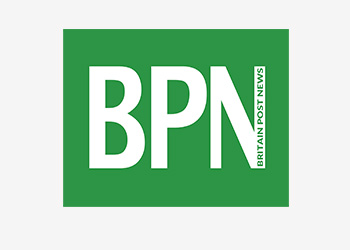Commentary: India wants to woo Sri Lanka. But China stands in the way

SINGAPORE: As a giant neighbour physically so proximate, India has a very complex relationship with Sri Lanka and is very different from that between Beijing and Colombo.
A THORNY RELATIONSHIP
Advertisement
Advertisement
That there is an ethnic overlay of the Tamil-speaking people across the Palk Straits, which divide peninsular India and Sri Lanka, make Colombos ties with Delhi unique. The Tamil question has, in fact, been a key driver of the relationship between India and Sri Lanka all these decades.
Sri Lankas deep ties with China in recent years is, arguably, a consequence of how the Tamil question played out between Colombo and Delhi.
An outdoor view of the China-Sri Lanka Friendship National Nephrology Specialized Hospital in Polannaruwa, Sri Lanka, November 9, 2019. REUTERS/Shihar Aneez
TIME FOR A MODI RESET
Advertisement
Advertisement
The Narendra Modi government is eager to reset the relationship with Colombo after the election of Gotabaya Rajapaksa as the Sri Lankan president with a strong mandate.
Indias external affairs minister, S Jaishankar, made a quick dash to Colombo to meet the new president with the promise of renewing the relationship on a new sustainable basis.
READ: Commentary: After a five-year hiatus, why the Rajapaksas are back in power in Sri Lanka
READ: Sri Lanka's ruling siblings: New president swears in his brother as Prime Minister
Gotabaya, in turn, appears to have reciprocated the sentiment and accepted Modis invitation to visit Delhi late November 2019.
The National Democratic Alliance government, led by Modi, appears to have the political will as well as the space to reset the ties with Sri Lanka.
There is an expectation that Gotabaya too will be pragmatic in addressing the challenges facing Sri Lanka. His party has also signalled that it has learnt from the political mistakes made during the decade-long rule (2005 to 2015) of Gotabayas brother, Mahinda Rajapaksa.
Sri Lanka's President Gotabaya Rajapaksa and his brother Mahinda Rajapaksa, who was appointed as the new Prime Minister, stand for the national anthem during the swearing-in ceremony in Colombo, on Nov 21, 2019. (Photo: REUTERS/Dinuka Liyanawatte)
BURYING THE HATCHET
However, many uncertainties will test the prospects for a genuine restructuring of India-Sri Lanka relations.
In India, Modi certainly seems to have learnt many valuable lessons from the negative impact of Indias involvement in the conflict between the Sinhala majority and the Tamil minority in Sri Lanka and the resulting deterioration of bilateral relations from the early 1980s to the mid-2010s.
READ: Commentary: Whats behind the overseas BJPs involvement in British politics?
Although the Indian military intervention in the Sri Lankan civil war ended disastrously in the 1990s, the political fall-out continued well into the 21st century.
As the civil war simmered in Sri Lanka and inflamed the sentiments in the neighbouring Indian province of Tamil Nadu, Delhi was trapped between assuaging the concerns of Tamil Nadu while encouraging the majority Sinhalese to resolve the issues peacefully.
A TOUGH BALANCING ACT
Successive coalition governments in Delhi from 1989 to 2014, which were dependent on the support of the Tamil parties, struggled to balance the pulls and pressures from Chennai, the capital of Tamil Nadu, and Colombo.
Needless to say, Delhi fell between the two stools. Its intervention deeply angered the majority Sinhala community. And the sense of threat from India nudged Sri Lanka to turn to China and Pakistan to balance against its northern neighbour.
Although India had strongly supported the unity of Sri Lanka, its support to federalism in the island nation was not acceptable to the majority community.
Delhis quiet assistance to Colombo in defeating the Tamil insurgency during 2008 to 2009 was significant but the United Progressive Alliance (UPA) government seemed unable to break out of its deference to Chennai in pursuing a much needed restructuring of ties with Lanka.
READ: Sri Lanka presidential front-runner would restore relations with China: Adviser
ENTER THE DRAGON
The UPA years, meanwhile, saw the rapid rise in Chinas economic influence and the growth of its security profile in Sri Lanka and generated growing concerns in Delhi.
Sri Lanka has granted China a 99-year lease on Hambantota port, on one of the world's busiest shipping routes AFP/LAKRUWAN WANNIARACHCHI
When he took charge as the head of the first government in three decades with a parliamentary majority of its own in the summer of 2014, Modi recognised the political need to address both the Tamil question and the China factor in the bilateral relations with Sri Lanka.
The strong mandate in 2014 had given Modi greater room to manage the competing imperatives on the Sri Lanka policy.
MENDING BRIDGES
For one, Modi brought greater balance in Indias engagement with the majority and minority community in Sri Lanka. Unlike his predecessor, Modi had no problem visiting Sri Lanka and reaching out to all sections of the Sinhala society.
He also seemed eager to resolve some long-standing problems like a fisheries dispute and offered economic cooperation and investments that would provide some alternatives to Colombos exclusive reliance on Beijing.
The Modi government also objected to the docking of Chinese submarines in the Colombo port.
READ: Sri Lankan lawmakers to investigate Lotus Tower graft allegation
Sri Lanka?s former president Mahinda Rajapaksa is adored by the Sinhala-Buddhist majority for crushing separatist Tamil rebels AFP/LAKRUWAN WANNIARACHCHI



